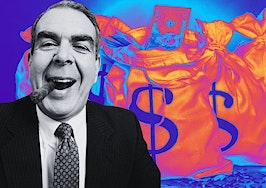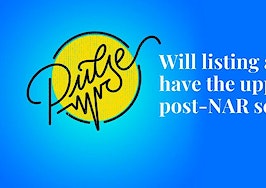- While living the listing agent life, brokerage owner Ian Katz saw a void in the New York market for exclusive buyer representation. He achieves around 80 percent success for his buyers.
- Katz argues that his self-starter, often millennial consumers want more transparency in their buying process and that dual agency does them no favors.
Take the average real estate transaction and then imagine an exquisitely tricky minefield — that’s the situation that many buyers in the Big Apple are up against.
Despite real estate apps galore, no magic bullet exists for putting together a successful offer on a Manhattan housing cooperative unit, for example, something that anyone who has been through will describe as a winding labyrinth.
“You can’t build an app for a co-op package; it’s so idiosyncratic,” Katz said. “You are dealing with boards who may approve or disapprove based on qualitative or personal reasons, or financial requirements specific to that building.”
A renewed conversation on exclusive listing agency in New York has emerged with Zillow Group’s addition of buyer’s agents lead forms to StreetEasy listings, while the perennial discussion surrounding dual agency, in which agents from the same brokerage represent both sides of a transaction, continues to be incendiary with vocal proponents and dissenters.
Katz, a successful listing agent for six years, saw a gap in the service being provided to consumers as listing aggregators and marketing platforms came on stream, leaving clients to interpret new and complex information to make a decision. He decided to become a buyer’s broker and start his own exclusive buyer’s agency, the Ian K. Katz Group, in 2014.
He thinks other brokers in similarly complex markets will follow suit. “Any way we can grow that piece is good for the industry,” he said.
“I think the more complex the buying, the more you will see buyer’s brokers proliferate.”
Knowing just enough to be dangerous?
In New York City, agents have to possess hyperlocal knowledge and conduct due diligence. Co-op requirements in particular vary from building to building, so you need the encyclopedic knowledge that can only be acquired through experience in doing different co-op deals. It’s that simple (or complicated), Katz argues.
While technology is never going to take the place of transactional work, it is empowering consumers to go further down the transaction road than before, view more listings, and even find their own comps from automated valuation models.
As a buyer’s broker, Katz sees his role as “marrying that data” and negotiating for clients, while protecting them.

Ian Katz with real estate clients in New York City. Photo source: Ian K. Katz Group
“This involves reading between the lines in a listing description, finding the right comps, interpreting the market for a property, negotiating tactically as a result and steering clear of hurdles in lending and board approval.”
Katz achieves around 80 percent success for his buyers.
In a recent deal involving a co-op apartment on Manhattan’s East Side and a board with strict requirements, Katz worked on a complex package for a family with a few sources of income.
He had to convince a skeptical listing agent that his buyers had the financial strength to clear the board’s approval so the offer would be accepted.
“This included explaining financial statements and company stock option protocols with our offer, and further down the road, presenting the clients’ net worth in the most thorough and easy-to-understand way so that a board with a sitting accountant and attorney would approve it,” Katz said.
Well-informed consumers still need help
What is the appeal of being a buyer’s broker in the dog-eat-dog world of the NYC real estate market?
Katz took issue with buyers having to rely directly on listing agents representing the seller for information that might not properly inform their position in the transaction, potentially putting themselves in compromising situations.
“It was from their feedback and demand for a pure buyer’s agent that I began to really feel this was a necessary brokerage niche in today’s market,” he said.
Starting at the beginning of 2014, he didn’t think it was a good idea to attach himself to a traditional real estate firm whose main focus was on listings.
“I found the best way to cater to buyers, to truly say: ‘I only represent their interests,’ was to launch my own operation. This made it easier to avoid dual agency and promise 100 percent loyalty to them.”
“Big listing firms have earned what they have, will continue to be successful, and meet a seller’s needs exceptionally well. But being independent works best for our buyer-focused business model,” he added.
Dual agency
Dual agency doesn’t always lead to a conflict of interest, but some agents end up sacrificing the interests of both parties. That’s been the experience of Katz’s purchaser clients, they tell him.
Katz is finding growing numbers of his savvy New York clients are aware of dual agency and its downsides.
“Dual agency comes up in conversation with my clients often these days once a buyer has been referred to us,” he said.
“Often the client has experienced it to negative effect or has been directed to hire a buyer’s agent by their attorney or financial advisor.
“One client even referenced a New York attorney general memorandum discouraging dual agency as a reason for seeking me out.”
Want to be a buyer’s agent? Do your homework
Being a buyer’s broker in the complex markets of Manhattan, Brooklyn and parts of Westchester is not for the inexperienced, Katz said.
You need to give yourself time to know the markets, the neighborhoods and the buildings. And it helps if you are known by the listing agents you are dealing with and have a good reputation with them.
“You have to wait to earn your stripes and come to own the knowledge,” the broker said.

Ian Katz with real estate clients in New York City. Photo source: Ian K. Katz Group
In his case, he had the idea to set up his own buyer’s brokerage but didn’t act on it for four years, waiting to “assemble the intellectual capital.”
Katz’s message to those interested in becoming a buyer’s agent is, don’t expect it to be as ritzy as being a listing agent.
“Listings get you on Open House New York, whereas as a buyer’s broker, you get to be seen more as that of a ‘lawyerly,’ consultant type of person,” he said.
“As a buyer’s broker, your brand is less about advertising budgets and placements and more about loyalty and trust,” he added.
Always screen your buyers
With the new wave of upwardly mobile professionals looking to diversify from shares and those who have Wall Street bonuses to invest, plenty of New Yorkers are mulling the opportunity that a real estate purchase presents, a favorite topic of conversation at Manhattan dinner parties, Katz said.
The buyers he comes across are a similar age group to Katz, who’s in his mid-30s. He describes them as “a new breed of buyers who are self-starters,” the newly wealthy with a net worth of between three-quarters of a million and $5 million.
They are used to calling on experts to help them get what they want.
“I have found that the people I’m servicing in my market are used to transparency; they don’t like spin,” he said.
Clients come to him when they are already some way into the buying process, and they often arrive with stories to tell.
“A lot of them come from co-op board ‘turndowns,’ where there either wasn’t a good buyer’s agent or they were really a seller’s agent who didn’t have the detail necessary to get passed by the board,” he said.
Katz puts clients through a screening process to make sure they are serious, and not just out kicking tires.
“They generally come through referral or I find them from scratch,” he said.
Would he have made more money as a listing agent? Maybe, maybe not.
“It’s not glamorous to be a broker without listings; you have to get over that,” he said.













